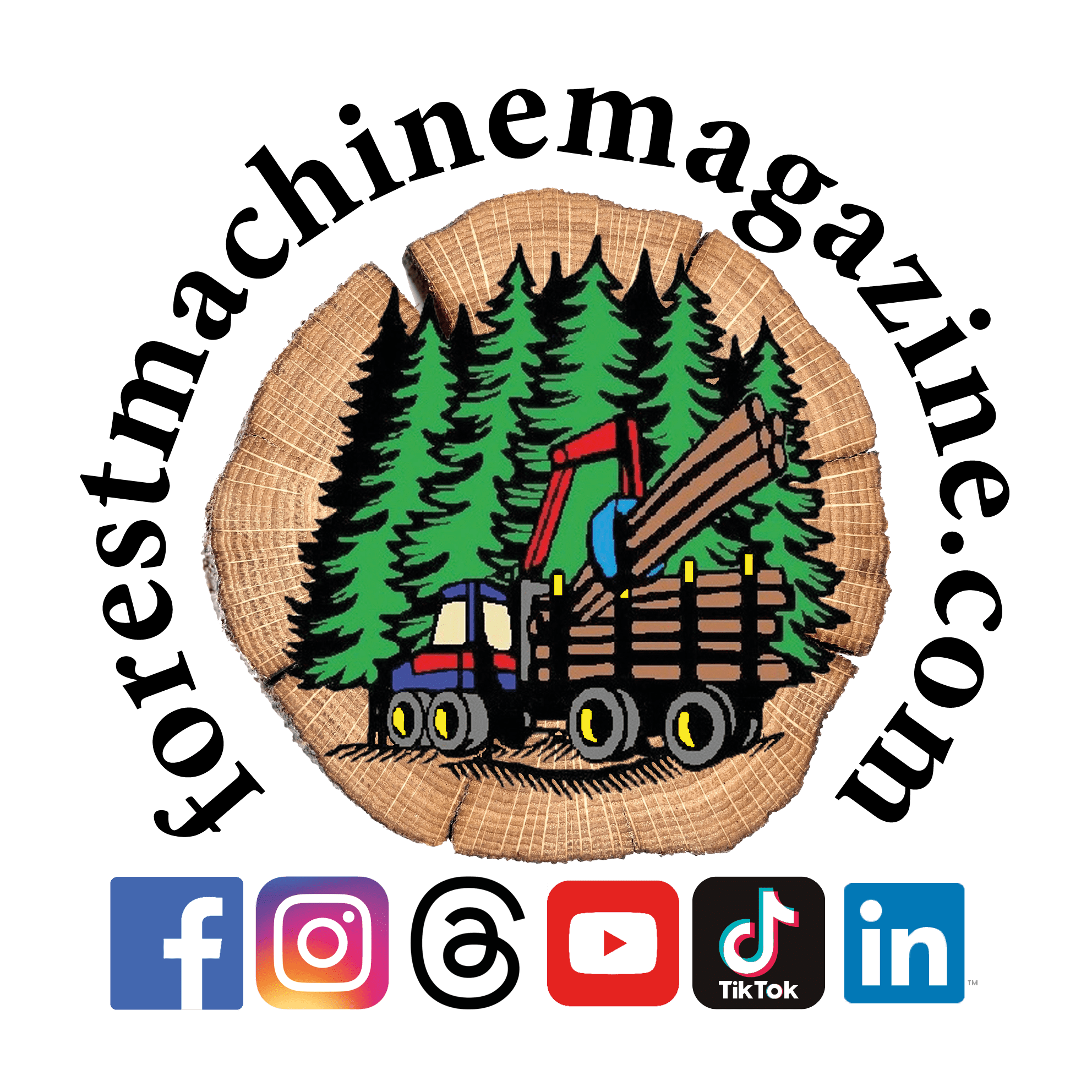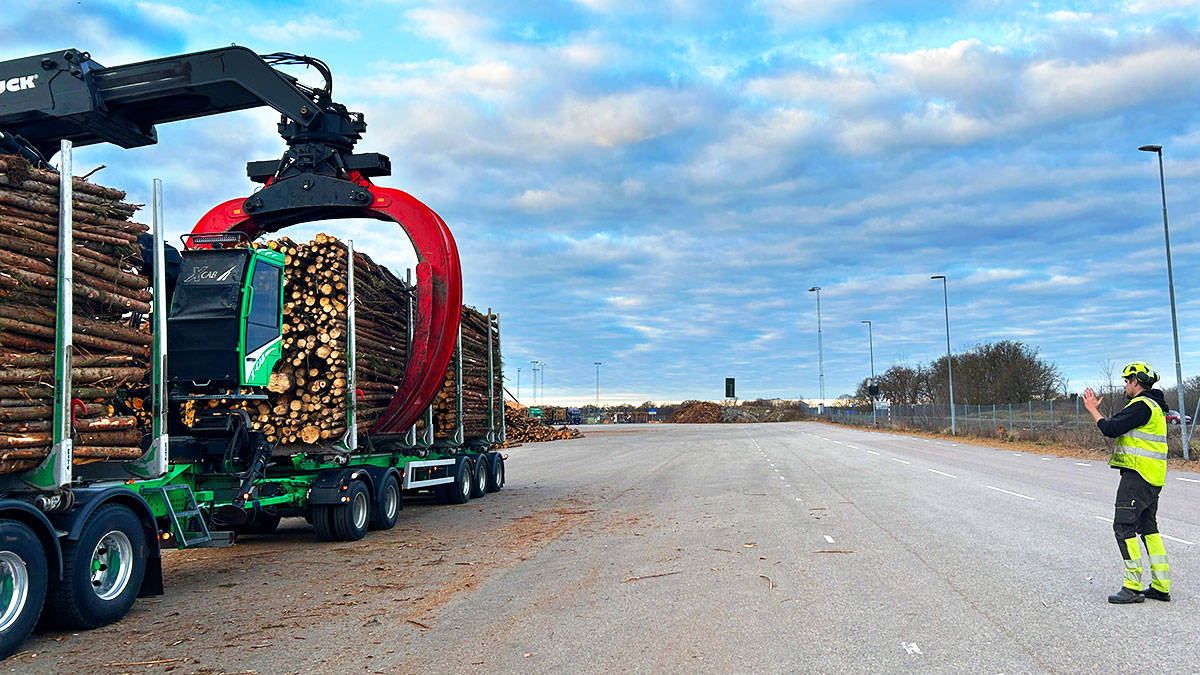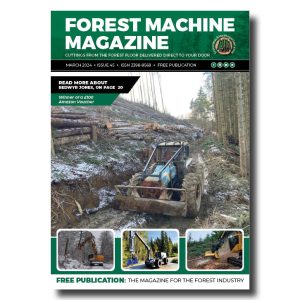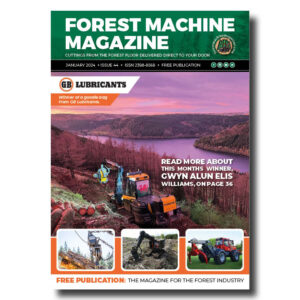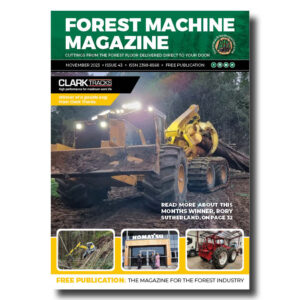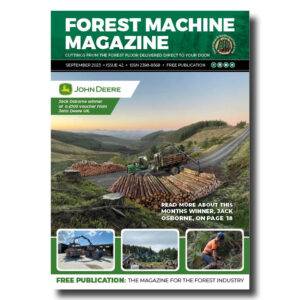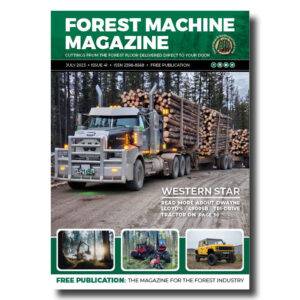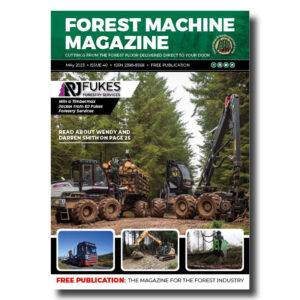Sustainable drivers – digital driver support for developed collaboration and improved work environment
How can digital drivers support simplify everyday lives and contribute to fossil-free forest transport? The “Sustainable Drivers” project develops solutions for the roundwood transport of the future.
Source; Skogsforsk

-
That’s a remarkable amount of work hours for a single machine, the Norcar 600 owned by Erkki Rinne is taken well care of, it even has the original Diesel engine.
-
Kieran Anders is a forestry contractor working in the lake district. His work involves hand cutting and extracting timber using a skidder and tractor-trailer forwarder.
-
It is not possible to eliminate chain shot, but there are simple steps that can be taken to reduce the risk.
-
Arwel takes great pride in the fact that the mill has no waste whatsoever, “the peelings are used for children’s playgrounds, gardens and for farm animals in barns in the winter and the sawdust has multiple uses in gardens and farms as well.
-
Timber hauliers need to encourage young blood in, and also look after the hauliers we have, we need make the sector a safe and positive place to work.
FIND US ON
Within the project “Sustainable drivers”, the work of timber truck drivers and transport managers is mapped as a basis for a prototype for digital driver support. The goal of driver support is both to facilitate the daily work of drivers and to increase the efficiency of the forest transport system. The increased electrification of the transport system is likely to mean additional needs for support for drivers linked to, for example, charging logistics and expected range. By mapping the planning and work processes, this shift can take place in a simpler way.
The project will be carried out for 2.5 years starting in January 2025 and is funded by Vinnova together with the project partners. Skogforsk is leading the work, which is being carried out in close collaboration with Södra Skogsägarna, L-A Ottossons åkeri AB, Nilzéns Åkeri AB, Skogslogistik AB, and the logistics association VSV Unite.

The role of drivers in the forest transport system is central. Many decisions are made at the far end of the forest roads, with sometimes rapidly changing conditions. This means that things can go wrong, which can be both expensive and potentially dangerous. There are already various driver support services that can offer drivers a better overview, but nothing that is comprehensive and also includes a function for collaboration between drivers. By developing a driver support system that shows timber stocks and changing industrial needs in the same view, driver planning becomes easier – and can save both time and fuel. However, this is easier said than done, as there are many actors who need to collaborate.
Through observations and interviews, data is collected in collaboration with the haulage companies participating in the project. This will be used for a system analysis, to pinpoint where, when and how planning takes place; how often and why the planning needs to be changed and how the work can be facilitated. A prototype for a driver support system with a focus on the drivers’ needs was developed in a feasibility study during 2023–2024. The prototype will now be developed and tested within the project with a focus on preparing for implementation in an operational driver support.

The project consists of four work packages:
- System analysis – describes current and future forest transport systems with a particular focus on the effects of electrification
- The driver of the future – examines future skills needs, working conditions and the basis for recruitment
- Information sharing – studies how data can be shared securely and efficiently between actors and what affects the willingness to share data
- Driver support – further development and testing of a digital prototype for driver support for roundwood drivers
The project is an important piece of the puzzle to prepare for the transition to fossil-free transport in forestry and to contribute to increased attractiveness for the driving profession. By combining technology, user-centered design and industry collaboration, solutions are created that strengthen both the work environment and transport efficiency.
The project manager is Madeleine Silverbratt, Skogforsk.
Approved application Vinnova through FFI: Sustainable drivers 2 – Digital driver support for increased collaboration and sustainability in timber transport
Link work report, the feasibility study:
Driver support for efficient and sustainable timber transport
Sign up for our free monthly newsletter here
Contact forestmachinemagazine@mail.com to get your products and services seen on the world’s largest professional forestry online news network.
#homeoflogging #writtenbyloggersforloggers #loggingallovertheworld
Written by loggers for loggers and dedicated solely to the equipment used in forestry operations.
